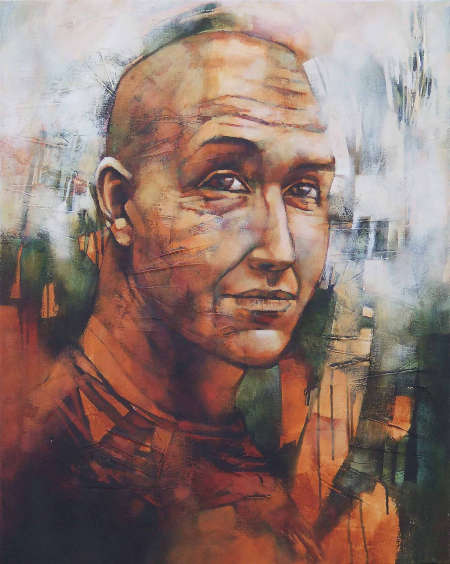
“Inspiration is a myth… inspiration only happens when one pushes oneself with a mixture of intellect, emotion and very hard work. With art, you have to give everything.”
Hugo Maritz was born in Windhoek in 1975. After matriculating at Linden High School in Johannesburg in 1993, Hugo obtained a BA (Philosophy and Psychology) degree at the Rand Afrikaans University. Although he never studied art, he started drawing at a very young age. In 1993 well-known arts critic and lecturer Nico van Rensburg took him under his wing and taught him more about composition and painting.
As a child, Hugo, spent a most of his time drawing comic strip characters, which is where he developed his sense of proportion. As his ability grew, his style developed towards realism, which laid an important foundation for his future work. He has since moved towards a more abstract and cubist style in his paintings.
Hugo has done eleven solo exhibitions and he exhibited his work for the first time at the age of 15. He has an enthusiastic following in South Africa and abroad, with works in private and corporate collections worldwide.
Hugo’s paintings consist of a many layered approach that start with acrylics and end with oils. He begins with sharp contrasts in black and white and then refines the composition to different scales of colour from dark to light, revealing the final work by modulating the strength of contrasts to create a dance of focal points that gives aesthetic pleasure to the eye.
Style Statement
Visual arts should be about encouraging people to look. A painting should not require a title or knowledge of the artist’s intent. A successful work captures the eye the way nature does. It is created nature. Titles are for fun and bookkeeping.
Stylisation is a kind of death in my opinion. I imagine it as an ever-constricting area of possibilities. There are so many things one can accomplish with paint alone that it would be a shame not to experiment further. Otherwise I would lose interest.
I enjoy painting myths, mostly none-existent ones. By myths I mean personifications of themes that have bearing on human nature. It is almost as if you observe in yourself from the third person perspective while also being intimately involved. The final work is revealed rather than achieved. This should not create the belief that the artist’s affects are random. They are precise and almost predetermined. They must be discovered like the destination on a path. You might say the artist’s skill is defined by how well he stays on track. It should be a vital and intuitive process requiring every faculty.
Like everything else, painting is a process of making a noise and returning to emptiness. Finding something pretty and painting over it. People always ask me where my inspiration comes from. It comes from an endless dissatisfaction with my work. Am I working towards something? Certainly. It is not a style or a method that I am pursuing, rather a way of painting. When I lose all awareness of myself in my activity, when I wholeheartedly participate in what I do, then I will have attained success. Art should go beyond skill but not be divorced from it.
